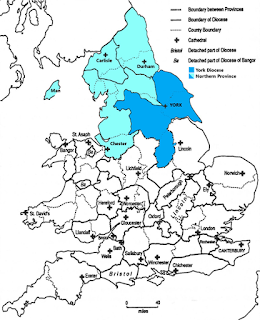Only four days remain before the deadline of the Ministry of Justice consultation paper regarding proposals to destroy all post-1858 original Wills and related documents, with the exception of those of famous people, and to retain only digital files of the rest. The full consultation paper may be viewed here.
You can respond directly at the following address or by email: civil_justice_poli@justice.gov.uk
Will Storage consultation
Ministry of Justice
Civil Justice and Law Division,
Postpoint 5.25
102 Petty France
London
SW1H 9AJ
The deadline for replies is this coming Friday, 23 February.
Below, is my own response in full, which was emailed this morning.
***
Response to the Ministry of Justice Open consultation paper: Storage and retention of original will documents, Published 15 December 2023
Question 3: Are there any reasons why the High Court should store original paper Will documents on a permanent basis, as opposed to just retaining a digitised copy of that material?
Yes. As a professional genealogist/ researcher working with documents in archives as well as online digitised copies of certain documents, I object strongly to proposals set down in the above consultation paper to destroy the majority of Wills and related documents after a prescribed period, replacing them with digital images of the same. My reasons are below.
Question 5: Do you agree that there is equivalence between paper and digital copies of wills so that the ECA 2000 can be used?
No. In archival terms paper wills and digital copies are not equivalent. Only the original is ‘the original’. A digital copy of that, no matter how perfect, is a stand-in: a ‘surrogate’. Even the citation appropriate for these types of documents is different: if a researcher is in the presence of the original document, the citation will be to that document and its location; if using a ‘digital copy’ of that, the citation requires extra information: what, precisely was viewed, via what website or other source, and when was it accessed? There is a reason for this: only the original can be guaranteed to include every mark and every page.
Digital preservation is not infallible. Despite the ‘huge advances that technology has made over recent years’ (Point 27) it does not follow that ‘digital copies of original documents can be extremely detailed and all relevant marks on the original will be retained in the digital version.’ JPEGs are ‘lossy’ files. Lossy compression compresses an image, making it smaller (and more economical) to store, but the trade-off is a permanent loss of detail. As a researcher who regularly downloads images from archives and commercial genealogy websites I know that those images are much-reduced JPEGs. Consequently, there are times when only the original will do, for example when comparing signatures with other documents to confirm this is the same person; or if a stain on the original document renders text illegible in digital format: in a good light, the eyes may be able to decipher the original.
Digital files can also corrupt, resulting in permanent loss of all contents. In any case, the technology available to us now may be surpassed in the not too distant future.
There is also the issue of human error. During the photographing process, it is possible to turn over two pages at once, to leave off useful information on the rear of a document, or even to omit an entire document. All researchers using online digital images will have experience of this. On occasion, too, documents may be incorrectly indexed, making the correct digital files very difficult to find. In 2023 entries on the GRO Births and Deaths registers were made available for direct download – a development greeted with delight by the genealogy world; and yet some of the digital photographs of the entries are not usable, owing to having been photographed at an angle, thereby cutting off essential information. The point with all these difficulties is that the original documents remain intact: they have not been destroyed. The digitisation is a great thing, but we need the originals too.
Question 4: Do you agree that after a certain time original paper documents (from 1858 onwards) may be destroyed (other than for famous individuals)?
No. History is not just about ‘famous people’. Concepts have changed. History is also about the many millions of others who were impacted by decisions of the powerful. Their Wills are important too.
Question 6: Are there any other matters directly related to the retention of digital or paper wills that are not covered by the proposed exercise of the powers in the ECA 2000 that you consider are necessary?
It is clear from the wording of the consultation paper that a rather narrow understanding of the enduring value of Wills and Probate documents is at play. Point 27 asserts that ‘All parties and courts will […] be equally able to rely on digital copies of wills to challenge the validity of that will or another as they would be if relying on the paper will.’ Undoubtedly that is true; and in this regard legal issues such as time limits for contesting a Will are relevant, and the comparison with time limits for retention of other Court documents (Point 45) is valid.
However, once Probate is granted, the Will and associated documents become public documents. As such, the original purpose of the Will and Probate documents is not its enduring value. It is not appropriate to restrict considerations to the immediate legal purposes and to the emotional attachment of the testator’s nearest and dearest. The wider value of a Will may become apparent many years into the future. Genealogists use them to learn about the immediate and wider family of the individual, their lifestyle and social standing. Historians and social scientists may take a much broader approach, for example examining Wills made by individuals in a particular location, or a particular ‘type’ of person, using their findings to draw conclusions about, and better understand that location, or our society more generally in the past.
Question 9: Do you agree with the principle that wills of famous people should be preserved in the original paper form for historic interest?
I agree of course that wills of famous people should be preserved, but not that this should be the exception to the rule of mass destruction.
The suggestion (Point 51) that this already happens for pre-1858 Wills is misleading and untrue. Before 1858, Probate was a matter for the ecclesiastical courts, and these valuable historic documents are stored in diocesan archives, with some original and copy Wills of the Prerogative Court of Canterbury held at The National Archives. While it is true that Prerogative Court of Canterbury: Wills of Selected Famous Persons have been separated out and stored in record series PROB 1, the implication that only these Wills have been kept is false. Not a single Will was destroyed; Wills of individuals not deemed ‘Famous Persons’ are archived within a different part of the collection.
Question 10: Do you have any initial suggestions on the criteria which should be adopted for identifying famous/historic figures whose original paper will document should be preserved permanently?
The mere posing of this question illustrates the problem: there is a value judgement linked to this. Since your values may be different to mine, who will decide? Might society’s assessment change over time? A suffragist in the nineteenth century might be considered a tiresome person, yet that same person today may be considered a trailblazer, playing an important part in the road to universal suffrage. What a travesty if it turned out this person’s Will was destroyed because they were not sufficiently ‘famous’, or their fame did not accord with contemporary values.
Janice Heppenstall





